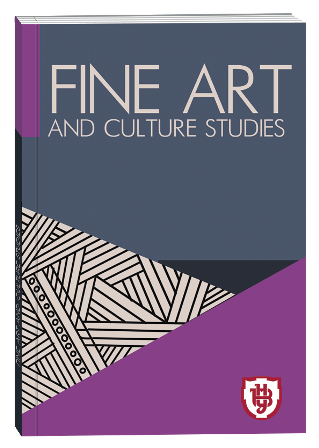THE ARCHAIC INDO-EUROPEAN BASIS OF THE MELODY OF UKRAINIAN RITUAL SONGS
DOI:
https://doi.org/10.32782/facs-2024-1-9Keywords:
vesnianky, hayivky, the Obzhynka songs, tetrachords, elements, Indo-European musical idiom.Abstract
The purpose of the study is to identify archaic Indo-European musical structures outlined in the works of Plato, Aristotle and Pythagoras in Ukrainian ritual songs. The research methodology combines comparative historical and musicological methods. Scientific novelty. The article is the first to analyse musical forms based on Pythagoras' "Perfect Unchanging System", which embodies elements of the four elements and Platonic-Aristotelian structures in the vesnianka "And in that garden"; in the hayivka "Oh my gai, gai"; in the obzhynka "Reaper" and "Four brothers mowed the grass"; and in the Cossack song "There is a sycamore tree over the water". For the first time, a split tetrachord is traced in the vesnianka "And in that garden", which according to the Pythagorean sound system corresponds to the element of fire and the upward jump of a quartet, which personifies the element of air. In the song "Oh, my grove, my grove", we state the presence of musical structures that express a pair of dense elements: water-earth and a pair that embodies the element of air. It is concluded that all of the above ritual songs and the Cossack song "The sycamore tree stands over the water" contain elements of the "Perfect Unchanging System of Pythagorean Sound System", namely, the Pythagorean tetractid fireearth- water-air. These musical structures form a pair of dense and dilute elements, and also occur as separate elements. In the vesnianka "And in that garden" we can see a pair of Pythagorean dense elements fire and air. In the song "Oh, my grove, my grove", the pair of dense elements water-earth and the double expression of the element air are clearly expressed. In the Obzhynka song "Reapers", the element of air is encountered twice at the beginning and end of the piece, and in the song of the same genre "Four brothers mowed the grass", the element of air is intertwined with the element of earth, which in turn verbally describes the phrase "mowing the grass". In the Cossack song "The Sycamore Tree Stands Over the Water", the element of water, indicated by the ascending interval of the quintet, also emphasises the verbal phrase describing this natural phenomenon.
References
Грінченко Б. Д. Історія української музики. Київ: Спілка, 1922. 294 с.
Драганчук В. М. Музична психологія і терапія: навч. посіб. для студ. спец. «Музичне мистецтво» / В. Драганчук; передм. Л. Кияновської. Східноєвр. нац. ун-т ім. Лесі Українки, 2016. 230 с.
Драгоманов М. П. Вибране. Мій задум зложити очерк історії цивілізації на Україні/ Упоряд. Р.С. Міщук, В.С. Шандра. Київ: Либідь, 1991. 688 с.
Іваницький А. І. Історичний синтаксис фольклору: Проблеми походження, хронологізації та декодування народної музики. Вінниця: Нова книга, 2009. 404 с.
Колесса Ф.М. Шкільний співаник. Київ: Музична Україна, 1991. 217 с.
Мишанич М. М. Народні співи Галичини: Гаївки. Львів: Гердан, 1991. 95 с.
Мішин В. Ю. Вчення про музичний етос у класичну епоху. Молодий вчений, 2018. № 2. С. 537–542.
Назаров Н.А. Індоєвропейський музичний ідіом та етногенез індоєвропейців. Folia Philologica, 2021. № 2. С. 42–60.
Поцелуйко А.Б. Архаїчні індоєвропейські елементи музичних форм українських народних календарно-обрядових пісень. Fine Art and Culture Studies, 2023. № 3. С. 93–99.
Anderson W. What Song the Sirens Sangs. Problems and Conjetures in Ancient Greek Music,1979. № 15. P. 11–15.
Chailly J. Le mythe des modes grecs. Acta musicologica, 1956, № 28. P. 146–147.
Laloy L. Anciennes gammes enharmoniques. Revuede philologie,1900. № 24. P. 31–43.
Lükő, G. Zur Frage der Musikkultur in der slawischen Urzeit. Studia Slavica Academiae Scientiarum Hungaricae, 1964. № 3–4. P. 237–289.
Young J.O. Assessing the Ethos Theory of Music. Disputatio, 2021. Vol. 13, № 62. P.283-297 doi: 10.2478/disp-2021-0015.







